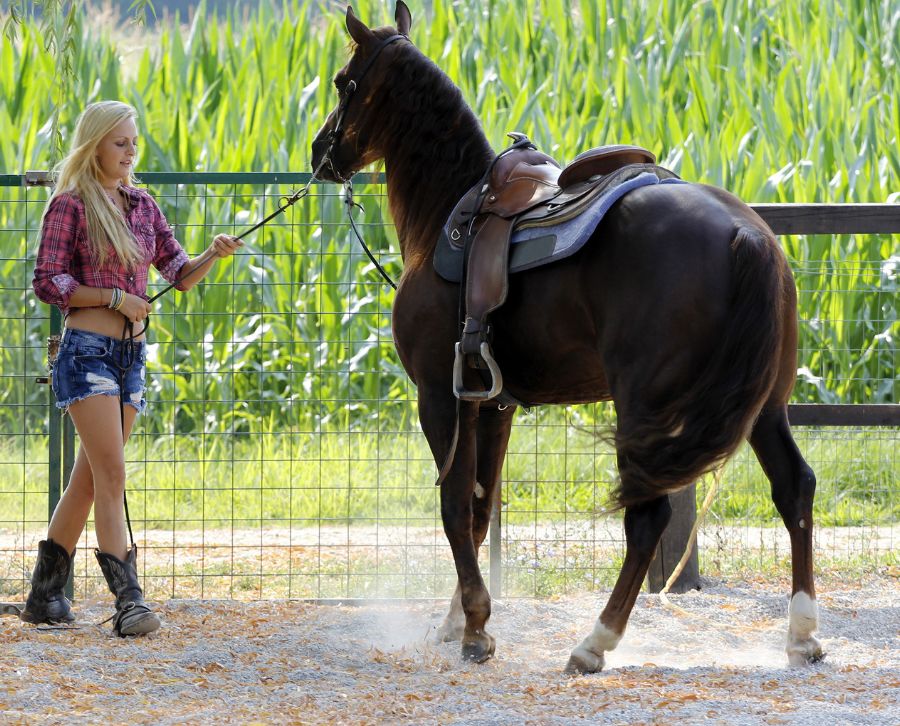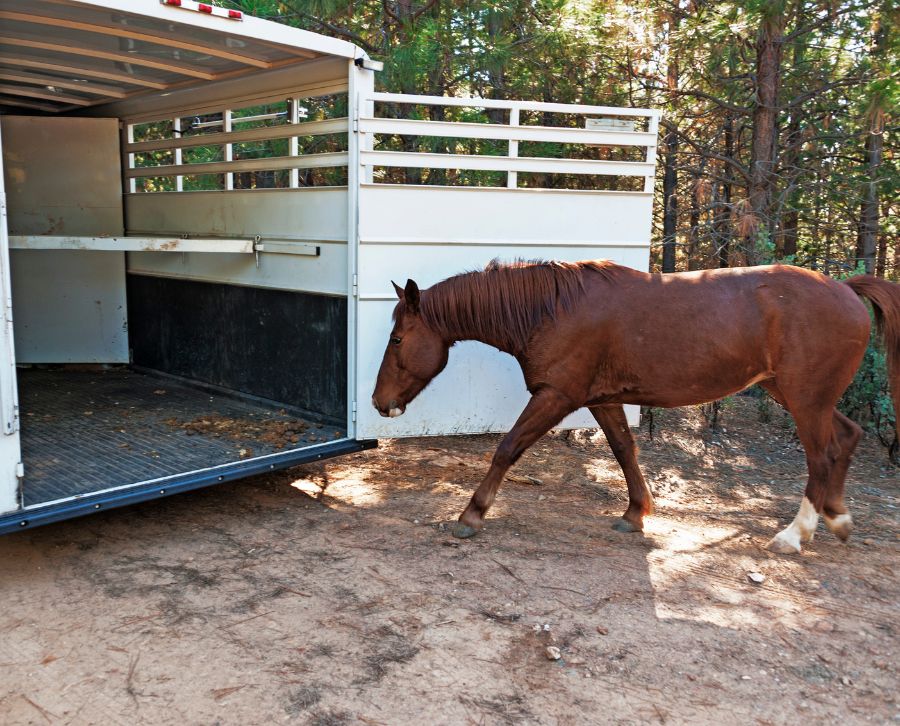Have you ever had the opportunity to see a rider controlling and asking the horse to do things? This is known as horse training. This discipline is one of the best known in the equestrian world and can become an incredible sport, where the pair shows their skills together.
From Equspadddock, as true lovers of the world of horse riding and manufacturers of equestrian equipment, in this article we explain what this Olympic sport is, what types there are and why it attracts so much attention.
Discover the fascinating world of taming a horse!

What is horse training and why is it important?
Horse dressage is an equestrian discipline, considered today as an Olympic sport, where the rider’s skill and ability to control and dominate the horse is scored and observed. At the same time, it is shown how the animal is capable of obeying and carrying out specific orders in a stately, elegant and confident manner.
Therefore, this modality shows the rider-horse relationship, their communication capacity and their trust in each other. That is, it is not only the training of an equine, but it is a relationship based on respect, trust and communication.
In addition, there are different types: cowgirl, classic and natural.
Training a horse: essential fundamentals
To carry out a horse training process, the essential fundamentals of this discipline must be taken into account:
- Management and basic training. The animal must get used to human contact, the use of the reins, the rope, the headrest…
- You must be used to different environments. It is important not to be scared by external stimuli such as noises, cars, different surfaces…
- Trust and security. The horse must fully trust its rider to obey and listen to him.
- Basic orders. To begin teaching more complex commands, it is essential that you know how to stop, go and turn.
Differences between horse training and equestrian dressage
Although at first glance they may seem the same or similar, they are not. So how is horse breaking and equestrian training different?
On the one hand, dressage is the process that is based on teaching and adapting the animal to the rider’s commands. Here it is essential that he be an obedient, confident and friendly specimen. They must understand each other and must train together.
And, on the other hand, training is the practice and improvement of specific skills that allow specific movements to be perfected according to the skill being practiced.
A clear example: if a horse is trained it can be ridden perfectly, but if it is not trained it will not know how to carry out specific movements of classical dressage.
Types of horse training and their characteristics
As we have mentioned, there are different types of training a horse. And each of them has different techniques and objectives.
Dressage: what it is and how to train a dressage horse
A horse in classical dressage develops flexibility, balance, obedience and confidence. Without a doubt, it is one of the most demanding disciplines and the basis of modern horse riding. The animal must move agilely, elegantly, precisely and lightly, without interruptions.
The rider orders a series of exercises to the horse where agility, flexibility, obedience, elasticity, tranquility, harmony are analyzed… Always looking for the special connection between the pair and the ability to work together.
Vaquera dressage: tradition and training of the cowboy dressage horse
For its part, a horse in cowboy dressage must perform quick exercises, adapt to changes in pace and have a great capacity for reaction. Therefore, he must be obedient, with a strong physical build, agile, powerful, elegant and with a strong character.
When training in cowboy dressage, you can perform exercises such as tight turns, dry stops, Spanish walk and elongated trot, controlling the animal with one hand, etc.
Natural dressage: connection and communication with the natural dressage horse
For its part, natural training consists of taming the horse by following its behavior, character and temperament, always observing it and understanding its signals. Therefore, in this technique, the rider must know you very well and use subtle language.
Among the most common exercises in this discipline is the saddle without embouchure, positive reinforcement exercises or rope and free work.
Techniques and training methods in equestrian dressage
As in most sports disciplines, there are specific techniques that require practice, perseverance and effort to achieve a good result. For this reason, and given that there are different modalities, there are different methods to train a horse in classical dressage, cowboy dressage or natural dressage.
Basic methods for training a horse
If we speak generally, horse training can be worked on in different ways, always respecting the animal. To begin with, it is essential not to rush the horse or overwhelm him, you must advance little by little so that he gains confidence and feels comfortable.
It is also important to work with positive reinforcement, that is, give him treats and caresses with each progress so that he feels good. And, above all, the key to learning is repetition, perseverance and teamwork.
It is essential that the pair feel comfortable working as a couple; this requires a lot of time and effort.
Essential tools and equipment for horse training
In order to make the most of each training, it is key to use the tools and accessories according to the type of horse training to be practiced. For example, among the essential equipment you cannot miss:
- Adjustable head
- Ethological rope
- Dressage saddle according to the discipline
- Bite
- Protectors
- Bandages
- riding clothes
- Riding boots
Benefits of horse training for the rider and the animal
As we have mentioned, this discipline known as training a horse requires a lot of practice and time together. This leads to creating a close and special bond. In this way, the animal feels comfortable with its rider, and he with his horse.
How natural dressage improves horse well-being
Natural training brings great benefits to the pair, such as reducing the horse’s stress and anxiety, increasing trust between them, improving the animal’s behavior, creating greater loyalty and achieving unique results.
Advantages of training in classical and cowboy dressage
So why should you train and practice dressage or cowboy often? This means advantages such as better physical development of the animal, better results in competitions, greater coordination and foresight in each of the movements or a better relationship between the two.
Where to learn horse training?
If you are interested in starting to practice classical, cowboy or natural dressage with a horse, you can investigate your area and ask at the different riding schools or equestrian centers nearby. This modality may not be practiced in all of them, so we recommend that you ask several and test if it really fits your preferences.
It is essential that the facilities are prepared for this type of discipline and that they have trained specimens for it.
How long does it take to break in a horse?
If you do not have experience in this type of equestrian discipline, you should know that the time to break in horses depends on each horse, the experience of the rider and the skills of both to work together. Although, in general, basic training can vary between about six months and a year. As for the more advanced exercises, these require more time.
Without a doubt, horse training is one of the most striking and impressive equestrian practices. Discover more about each type and enjoy the equine world!



